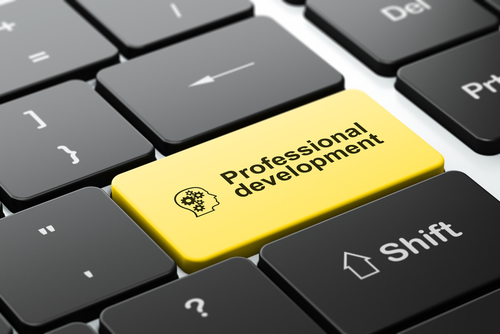Teachers are overwhelmingly turning to social media and online resources to drive their own professional learning, according to new Speak Up Survey data released by Project Tomorrow on July 30.
The data gives district administrators insight into what teachers still struggle with in the classroom, as well as the professional learning approaches they say they most value.
Teachers are turning away from face-to-face professional learning conferences (47 percent did so in 2010, compared to 40 percent in 2017) and are:
- Watching videos or TED Talks (from 40 percent to 46 percent)
- Participating in webinars or online conferences (from 15 percent to 34 percent)
- Using social networks to seek help from other teachers (from 14 percent to 33 percent)
- Taking online courses on their own (from 20 percent to 23 percent)
- Using Twitter or other social media to follow education experts or other teachers (from 5 percent to 23 percent)
District administrators say the best way to improve student achievement is professional learning that focuses on enhancing teacher effectiveness. Part of that professional learning should focus on new instructional practices, because teachers are not as comfortable with all aspects of their profession.
Surveyed teachers say they are not very comfortable with certain new practices, including facilitating student collaborations using digital tools (78 percent), personalizing learning for each student (76 percent), creating project-based learning experiences for students (75 percent), and using student data to inform instructional practice (70 percent).
Teachers want more time for collaboration and planning with peers (65 percent), along with traditional PD training (53 percent), in-school coaching (39 percent), information on classroom management strategies (32 percent), and virtual coaching (19 percent).
When it comes to teachers’ PD wish lists, strategies include using technology to differentiate instruction (47 percent), using technology tools for formative assessment (29 percent), and implementing blended learning (28 percent).
Sixty-one percent of district leaders say training teachers on how to use student data is imperative, though just 25 percent of teachers share that priority.
Administrators say that when it comes to implementing innovative classroom tools, they struggle with motivating teachers to change instructional practices (46 percent) and with staff professional development (43 percent).
Level of student engagement (77 percent), classroom observations (69 percent), student feedback (62 percent), teacher buy-in for the new innovation (54 percent), and teacher feedback (53 percent) are all different areas administrators check when evaluating the success of new teaching and learning innovations.
Despite teachers’ clear professional development priorities, districts continue to struggle with providing personalized professional development (66 percent); finding time for teacher professional development (58 percent); empowering teachers to be self-initiated learners (54 percent); assessing teacher skills and needs (27 percent); and evaluating ways to recognize teacher proficiency (26 percent).
- Friday 5: Teacher stress - May 3, 2024
- Student success is impacted by issues outside of school, survey finds - May 1, 2024
- Friday 5: Virtual field trips - April 26, 2024

